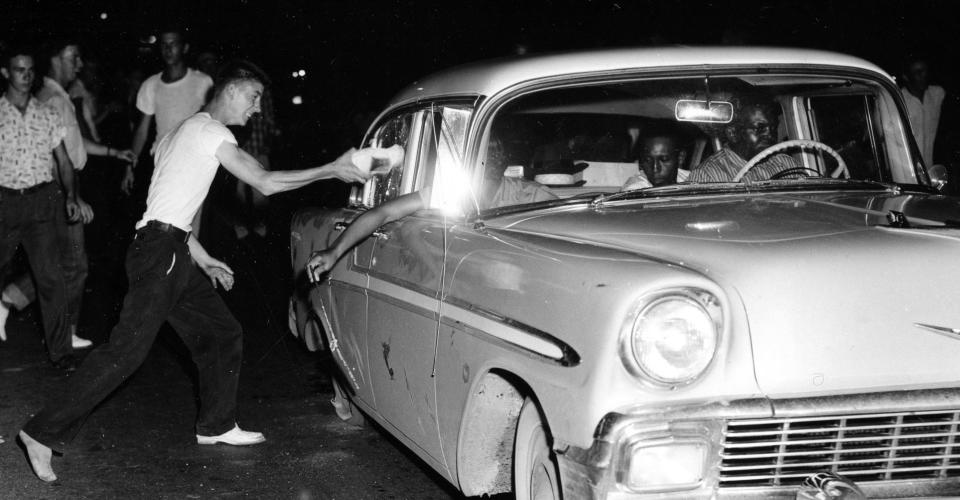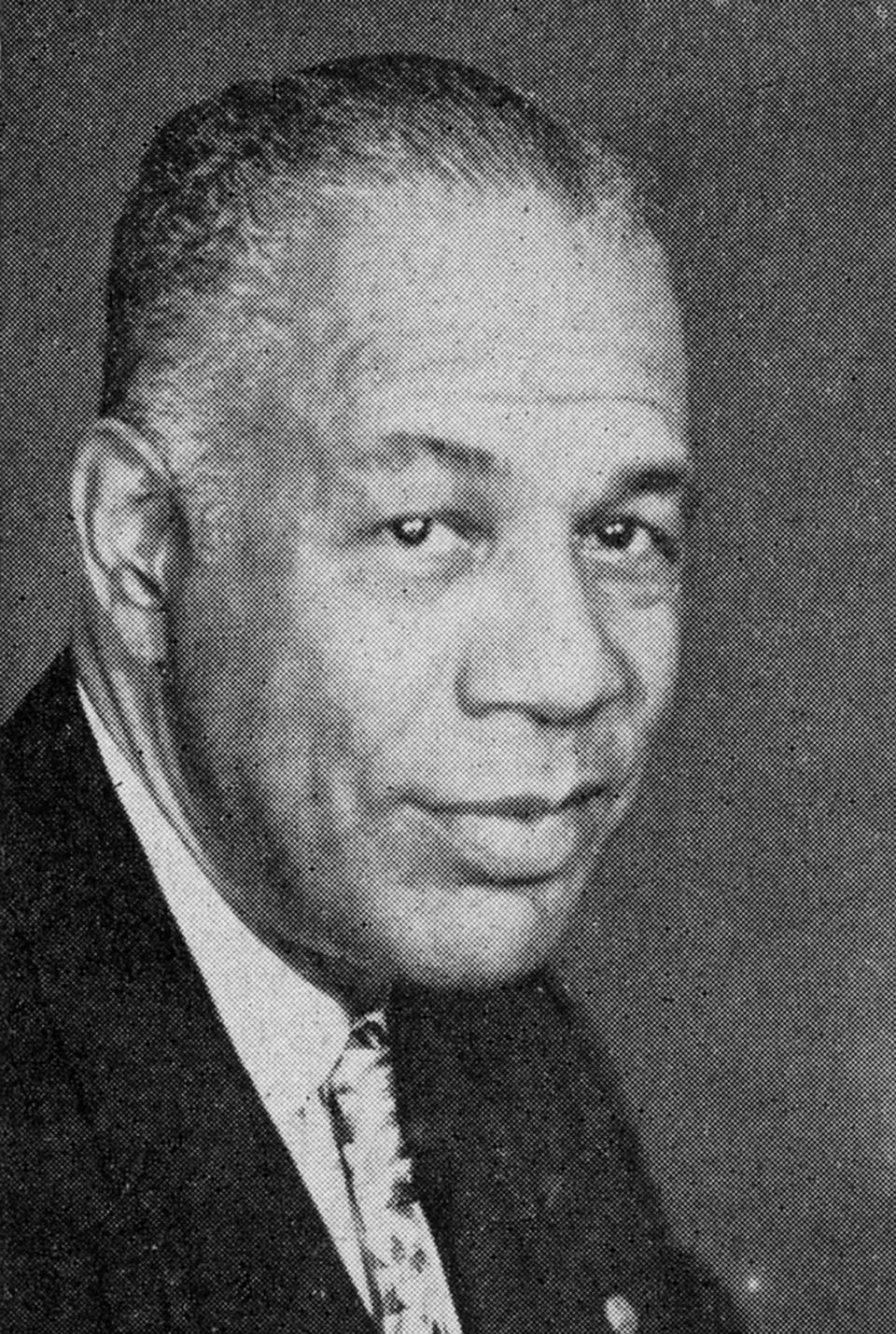A look inside the Green Book, which guided Black travelers through a segregated and hostile America
- Oops!Something went wrong.Please try again later.
- Oops!Something went wrong.Please try again later.
For Black travelers driving across segregated America in the '40s, '50s and '60s, the Negro Motorist Green Book was more than a travel aid – it was a guide for keeping them safe.
The Green Book – named after its creator, not the color of its covers – was pocket-sized, about 5 by 7 inches, and published nearly every year from 1937 to 1966.
The guide was an indispensable list of Black-friendly businesses essential to travel: hotels, restaurants, gas stations, garages and more.
"It was one of many things African Americans had to develop to survive a hostile environment," says Scot Brown, professor of African American Studies and history at the University of California-Los Angeles. "A modern-day equivalent could be a Black GPS."
The 2018 Oscar-winning movie 'Green Book,' has inspired a new generation of Black travel guides and podcasts.
African Americans of that time were restricted by Jim Crow laws, harsh legislation passed in Southern states that limited rights of Black people from 1877 to the mid-1960s.
Those laws promoted white supremacy in every aspect of daily life, including travel. White-owned businesses could legally turn away Black travelers seeking a meal, a room for the night or even a restroom. Those who protested risked horrific violence or worse.
From the Green Book:
"They were a series of laws designed to impose segregation," Brown says. "They restricted voting rights, limited access to mobility and controlled Black bodies, turning them into a pliant labor force."
The Green Book was in response to Jim Crow.
It was created by Victor Hugo Green – reputedly named after Victor Hugo, French author of "Les Misérables" and other works – a Black postal worker and entrepreneur in Harlem who saw the need for a guide.
The guide was established in 1936, but "there's no known copy of a 1936 edition," Maira Liriano of the Schomburg Center for Research in Black Culture, part of the New York Public Library, told USA TODAY.
"Some have suggested that the Green Book was established in 1936 but that 1937 was the first printed guide," Liriano says. "There is no way to know for sure."
The 1937 edition, titled "The Negro Motorist Green Book," had 16 pages and focused on New York City businesses. It cost 25 cents, about $4.60 today, calculating for inflation.
The guide proved popular, and Green expanded it to 24 pages covering 21 states and the District of Columbia the following year. It doubled in size in 1939, to 48 pages and 44 states. Though other guides for Black travelers existed, none was published as long as the Green Book.
Pages from the 1954 edition:
The Green Book appeared as Black Americans were on the move. The First and Second Great Migrations saw as many as 6 million African Americans relocate from the South to the North and West from 1910 to 1970, according to the Schomburg Center.
They sought better economic opportunities and wanted to escape the violence – the legalized racism of Jim Crow, the lynchings and attacks such as the Tulsa Race Massacre of 1921.
Those who moved left family members behind. They naturally returned to visit, which often meant long trips through unfriendly or even hostile areas.
"It wasn't just about safety, it was also knowing about problem areas, where police could be very aggressive in handling Black motorists," Brown says.
Some of those travels can be heard in the stories of the Macmillan Podcast series "Driving the Green Book," which launched in September. It's available on multiple platforms, including Apple Podcasts, Spotify and Stitcher:
Better-paying jobs in Northern cities made it possible for African Americans to purchase automobiles and avoid indignities and confrontations of bus and train travel.
But problems remained. For traveling, Black motorists had to pack their cars with extra food and water in case they could not find a restaurant that would serve them, blankets and bedding if motels turned them away, and coffee cans for roadside bathroom breaks if service stations refused entry.

By word of mouth and advertising, Black motorists began using the Green Book to find safer places for meals, lodging and gas. The guides were sold at churches, Black businesses and at Esso gas stations, the only major retailer to offer them. Esso not only welcomed Black customers – more than a third of its dealers in the 1940s were African American.
From the Green Book:
Green regularly expanded the guide, changing the title in 1952 to The Negro Travelers' Green Book, with advice on train, bus and airplane travel. He asked fellow postal carriers for recommendations and implored readers to reach out to suitable businesses. Later editions included information on vacationing in other countries. By 1960, it was known as The Travelers' Green Book.
Black-owned businesses and travel experiences: 'Green Book' inspires new generation of Black travel guides, podcasts
It's not known how many Green Books were published. Candacy Taylor, in her authoritative book "Overground Railroad: The Green Book and the Roots of Black Travel in America," says no official publication records are available. Some sources estimate 15,000 were sold annually; others say 2 million were sold in 1962 alone.
Original Green Books are nearly impossible to find, though reproductions are available. These covers are from the digital collections of the Schomburg Center, which include inside pages.
Driving the Green Book routes
In addition to storing Green Book pages online, the Schomburg Center offers a mapping program that shows readers the paths Black travelers could have chosen in 1947 and 1956.
Here are route changes for those years for a Detroit-to-New Orleans drive, and a non-interstate highway alternate route a driver could take today:
For many African Americans, parts of Green Book-style planning and preparation endure to this day.
"Traveling by road is not the same now, but calling ahead, about certain towns, checking on safety, is still a part of Black life," Brown says. "Segregation by custom is just as effective as segregation by law."
Many of the Green Book businesses travelers used are gone, but some remain. The Lorraine Motel in Memphis, where Martin Luther King Jr. was assassinated in 1968, was noted in the guide for years. It's now the National Civil Rights Museum.
Other businesses are still in operation. Below is an image of the Mona Lisa Motel in Inkster, Michigan, outside Detroit, from page 49 of the 1962 Green Book.
Sundown towns across the USA
Jim Crow laws were associated primarily with the South, but Northern states held other dangers. “Sundown towns” were white communities that used threats of violence or death to force Black travelers into leaving. Some towns posted signs warning Black visitors to be out by sundown.
Here are locations of towns, communities and counties considered to be sundown towns at some point in their history, according to research by sociologist James Loewen, author of "Sundown Towns: A Hidden Dimension of American Racism." Tougaloo College in Mississippi maintains the database.
"Victor Green did not know of the astounding prevalence of sundown towns across the North, so his Green Book didn't do much to help Black folks avoid them," Loewen told USA TODAY.
"Of course, the point of his book was to tell folks where they could stay, eat and play, not where they couldn't," Loewen says.
Who was Victor Hugo Green?

Green was born in New York City in 1892 and became a mailman for the U.S. Postal Service at age 21. He and his wife Alma moved to Harlem in the late 1920s and he managed Robert Duke, his brother-in-law and a musician, while working at the post office.
Duke toured as a musician and experienced firsthand the threats and difficulties African Americans suffered in white establishments. Green heard Duke's stories and decided to create a travel guide for Black travelers, using guides published for Jewish people who often faced discrimination from non-Jewish whites.
Not surprisingly, musicians valued the guide as they traveled from gig to gig.
"The Green Book was also a map of sorts to the Chitlin' Circuit," Brown says. The circuit was a network of clubs and theaters in African American neighborhoods that hosted some of the best musicians in American history.
The Chitlin' Circuit operated when many mainstream venues either didn't allow African American performers or maintained segregated audiences, if Black people were welcome in the venue at all.
Green used nights and weekends to work on the guide and kept his job at the Postal Service before retiring in 1952. Taylor says he made a comfortable living as a postal carrier and probably broke even while publishing the Green Book.
From the Green Book:
Green died Oct. 16, 1960, at the age of 67, four years before passage of the Civil Rights Act of 1964 that prohibited discrimination on the basis of race, creed, color, religion, sex or national origin in the USA.
Alma Green and an all-female staff continued publishing the Green Book after his death. The last was published in 1966 as the Green Book International Edition, 1966-67.
Green himself looked forward to the last issue, as early as 1948:
Top illustration: Colored waiting room at bus station in Durham, N.C., 1940, photo by Jack Delano; “We cater to white trade only” sign in restaurant window in Lancaster, Ohio, 1938, photo by Ben Shahn, Farm Security Administration; Police Chief George Guy beside the “white waiting room” sign at the Greyhound bus station in McComb, Miss., 1961, Associated Press photo; a white mob rocks an out-of-state car with Black passengers passing through Clinton, Tenn., 1956, photo by Robert W. Kelley, LIFE Picture Collection via Getty Images.
SOURCE USA TODAY Network reporting and research; New York Public Library’s Schomburg Center for Research in Black Culture; "Overground Railroad: The Green Book and the Roots of Black Travel in America" by Candacy Taylor, 2020; "Driving While Black: African American Travel and the Road to Civil Rights" by Gretchen Sorin, 2020; "Sundown Towns: A Hidden Dimension of American Racism" by James Loewen, 2005; Tougaloo College, Jackson, Miss.; Constitutional Rights Foundation; Associated Press; National Association of Letter Carriers; U.S. Census
This article originally appeared on USA TODAY: Green Book, in detail: Learn about guide that helped Black travelers

